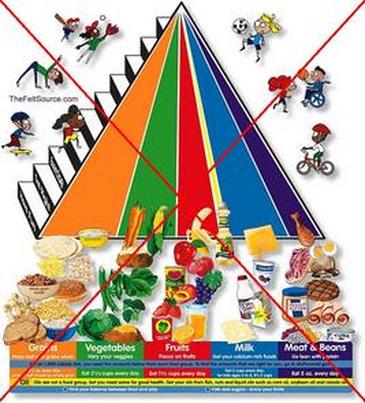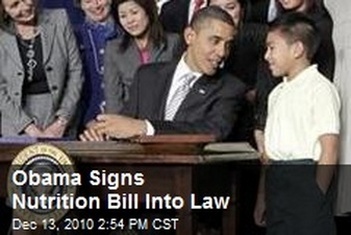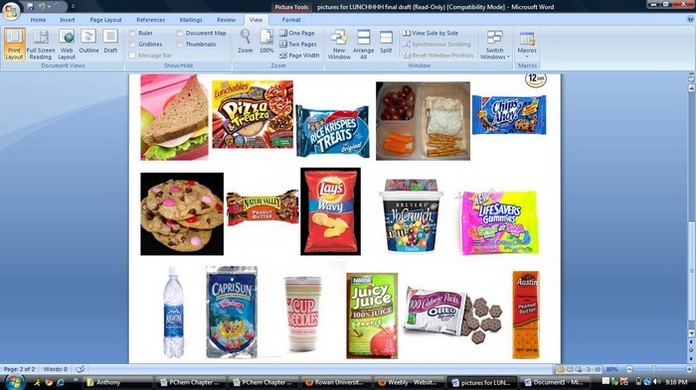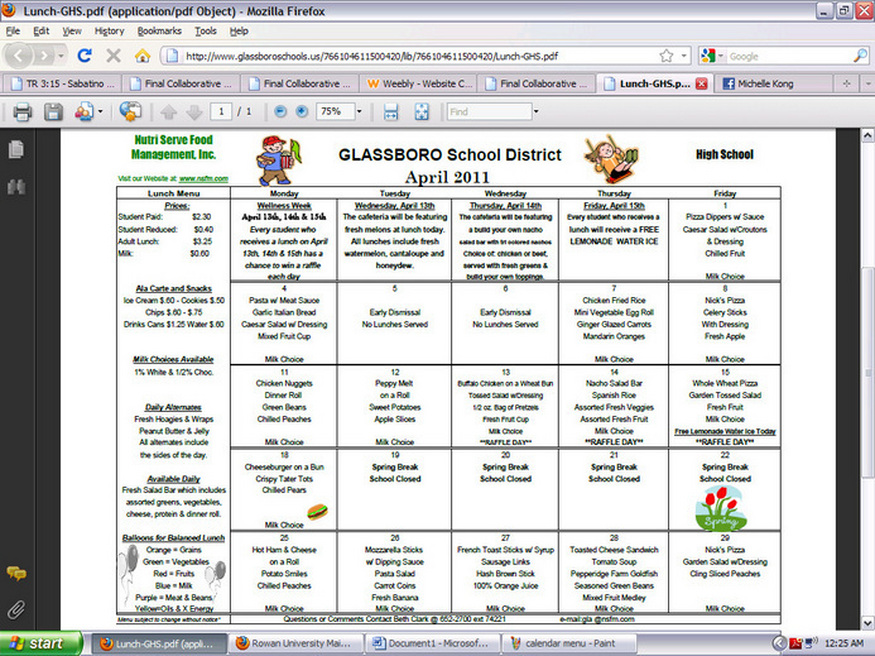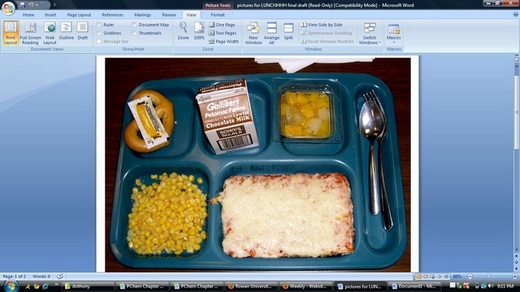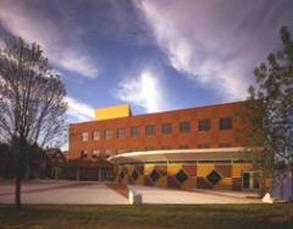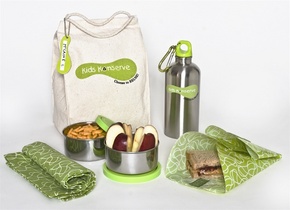Bought vs. Brought Lunches
Which is more nutritionally beneficial?
By:
Kaitlin Kelly
Alicia Morales
Jacqueline Bosworth
Michelle Kong
Which is more nutritionally beneficial?
By:
Kaitlin Kelly
Alicia Morales
Jacqueline Bosworth
Michelle Kong
Abstract
After narrowing down the endless thoughts about what we should research for our Collaborative Research Project, my teammates, Kaitlin Kelly, Alicia Morales, Jackie Bosworth, and I were eventually able to meet some common grounds for our topic question: Bought Lunches vs. Brought Lunches - Which is more nutritionally beneficial? Since half of our teammates are education majors and we all had a common interest with kids and our own personal teenage experiences, we decided to revolve our research in the setting of two middle schools. As another common interest, we collaboratively decided to investigate on every kid’s favorite period of the day- LUNCH. As we reflected on this topic, we questioned whether or not students who brought their lunches versus those who bought their lunches from the cafeteria had healthier or less healthier meals. With this unknown question in mind, our team set out to answer our research question by first finding two interviewees. Michelle Kong interviewed Beth Clark, the Food Service Director for Glassboro Public Schools. Jackie Bosworth interviewed Pamela Reilly, a teacher at Durand Academy and Community Services. After about four weeks of interviews, additional research, and attempts at getting inside the actual school cafeterias, my teammates and I completed our project. Research based off of Obama's Nutrition Bill showed that our findings leaned toward bought lunches being more nutritionally beneficial.
Introduction
We set out to answer our research question by first finding two interviewees. Michelle Kong interviewed Beth Clark, the Food Service Director for Glassboro Public Schools. Jackie Bosworth interviewed Pamela Reilly, a teacher at Durand Academy and Community Services. After about four weeks of interviews, additional research, and attempts at getting inside the actual school cafeterias, my teammates and I completed our project. Checklists based on Obama's Nutrition Bill showed in our findings that bought lunches are more nutritionally beneficial. After finalizing our answer to our main research question, we decided to also research how to make the brought lunches more healthy. Along the way, we also did extra research on a topic closely related to our topic, almost proving our research answer. A group member took recognition to the fact that a school in Chicago was banning brought lunches per health standards.
What Does It Mean To Be Nutritionally Beneficial?
After narrowing down the endless thoughts about what we should research for our Collaborative Research Project, my teammates, Kaitlin Kelly, Alicia Morales, Jackie Bosworth, and I were eventually able to meet some common grounds for our topic question: Bought Lunches vs. Brought Lunches - Which is more nutritionally beneficial? Since half of our teammates are education majors and we all had a common interest with kids and our own personal teenage experiences, we decided to revolve our research in the setting of two middle schools. As another common interest, we collaboratively decided to investigate on every kid’s favorite period of the day- LUNCH. As we reflected on this topic, we questioned whether or not students who brought their lunches versus those who bought their lunches from the cafeteria had healthier or less healthier meals. With this unknown question in mind, our team set out to answer our research question by first finding two interviewees. Michelle Kong interviewed Beth Clark, the Food Service Director for Glassboro Public Schools. Jackie Bosworth interviewed Pamela Reilly, a teacher at Durand Academy and Community Services. After about four weeks of interviews, additional research, and attempts at getting inside the actual school cafeterias, my teammates and I completed our project. Research based off of Obama's Nutrition Bill showed that our findings leaned toward bought lunches being more nutritionally beneficial.
Introduction
We set out to answer our research question by first finding two interviewees. Michelle Kong interviewed Beth Clark, the Food Service Director for Glassboro Public Schools. Jackie Bosworth interviewed Pamela Reilly, a teacher at Durand Academy and Community Services. After about four weeks of interviews, additional research, and attempts at getting inside the actual school cafeterias, my teammates and I completed our project. Checklists based on Obama's Nutrition Bill showed in our findings that bought lunches are more nutritionally beneficial. After finalizing our answer to our main research question, we decided to also research how to make the brought lunches more healthy. Along the way, we also did extra research on a topic closely related to our topic, almost proving our research answer. A group member took recognition to the fact that a school in Chicago was banning brought lunches per health standards.
What Does It Mean To Be Nutritionally Beneficial?
We decided to base our results on the Obama Administration's nutritional value of school meals instead of the food pyramid for a few reasons. The food pyramid represents suggested percentages for the daily diet of different food groups. That is not exactly what we were looking for. Instead of a daily diet, we were more focused on one specific meal during the day for children. Obama's Nutritional Bill has the same focus. We looked at his demand for an increase in the serving of vegetable, fruit, whole grains, and milk. Using those four criteria, we decided to investigate various bought and brought lunches to see which offered more of those.
Brought Lunches
We took a look at nine different brought lunches of students at Durand Academy. To investigate their meals, we made a checklist of the four criteria mentioned above: vegetables, fruit, whole grain, and low-fat milk. The table below represents our findings. Only two out of nine students brought vegetables, only two out of nine brought fruit, not one student brought whole grain, and not one student brought low-fat milk. These findings are quite shocking.
We took a look at nine different brought lunches of students at Durand Academy. To investigate their meals, we made a checklist of the four criteria mentioned above: vegetables, fruit, whole grain, and low-fat milk. The table below represents our findings. Only two out of nine students brought vegetables, only two out of nine brought fruit, not one student brought whole grain, and not one student brought low-fat milk. These findings are quite shocking.
Bought Lunches
We then took a look at Glassboro School District Lunches online. Each day, we analyzed the food items being served, checking off whether or not they contained the criteria: vegetables, fruit, whole grain, and low-fat milk. The table below represents our findings. Fourteen out of the fifteen meals contained a vegetable, fourteen out of the fifteen contained a fruit, only two of the fifteen meals had whole grain, and all fifteen meals offered low-fat milk. We were pleasantly surprised with these results.
We then took a look at Glassboro School District Lunches online. Each day, we analyzed the food items being served, checking off whether or not they contained the criteria: vegetables, fruit, whole grain, and low-fat milk. The table below represents our findings. Fourteen out of the fifteen meals contained a vegetable, fourteen out of the fifteen contained a fruit, only two of the fifteen meals had whole grain, and all fifteen meals offered low-fat milk. We were pleasantly surprised with these results.
Video of the student's lunches at Glassboro Middle School
National School Lunch Program
We began researching Glassboro School district regulations for school lunches. Instead, we ran across Child Nutrition and WIC Reauthorization Act of 2004, which is commonly referred to as National School Lunch Program of 2004. This program was designed to help qualified students and children all over the country in receiving free or reduced priced lunches.
The policy reads "- each participating district must have adopted a wellness policy. Such a policy must include goals for nutrition education, physical activity, and other school-based activities that are designed to promote student wellness. Additionally, the policy must contain nutrition guidelines for all foods available on each school campus during the school day with the objectives of promoting student health and reducing childhood obesity. A district must also designate a person who will be responsible for measuring implementation of the policy. "(Child Nutrition and WIC Reauthorization Act of 2004) It is good to know that our country is beginning to open the door to motives on decreasing the chance of obesity in children. The Obama Administration's nutritional value of school meals relates to the National School Lunch Program by making sure the children are not only fed each day during school hours, but are being fed nutritional healthy foods to increase their development.
We began researching Glassboro School district regulations for school lunches. Instead, we ran across Child Nutrition and WIC Reauthorization Act of 2004, which is commonly referred to as National School Lunch Program of 2004. This program was designed to help qualified students and children all over the country in receiving free or reduced priced lunches.
The policy reads "- each participating district must have adopted a wellness policy. Such a policy must include goals for nutrition education, physical activity, and other school-based activities that are designed to promote student wellness. Additionally, the policy must contain nutrition guidelines for all foods available on each school campus during the school day with the objectives of promoting student health and reducing childhood obesity. A district must also designate a person who will be responsible for measuring implementation of the policy. "(Child Nutrition and WIC Reauthorization Act of 2004) It is good to know that our country is beginning to open the door to motives on decreasing the chance of obesity in children. The Obama Administration's nutritional value of school meals relates to the National School Lunch Program by making sure the children are not only fed each day during school hours, but are being fed nutritional healthy foods to increase their development.
Chicago School Bans Packed Lunches
While I was trying to research different websites that offer ideas on how to make brought lunches healthier and give parents healthy ideas, I found a website dealing with a Chicago school. Little Village Academy is a small school located in Chicago. Currently, they are battling the public per their new ban on packed lunches. "Nutrition wise, it is better for the children to eat at the school," Carmona told the Chicago Tribune. (miami herald website) Also included in this news article are the downfalls to not letting parents pack a lunch for their child. Money becomes a major controversy. What if the parents can't afford to shell out the cash that it costs to buy a lunch at Little Village? There is mention of exception to the rule if the child has food allergies. The reasoning behind the ban on packed lunches is proclaimed to be that a staff member realized that she saw more and more children bringing in things like soda and chips. It is stated that the school feels as though the children will benefit nutritionally from buying a school lunch.
While I was trying to research different websites that offer ideas on how to make brought lunches healthier and give parents healthy ideas, I found a website dealing with a Chicago school. Little Village Academy is a small school located in Chicago. Currently, they are battling the public per their new ban on packed lunches. "Nutrition wise, it is better for the children to eat at the school," Carmona told the Chicago Tribune. (miami herald website) Also included in this news article are the downfalls to not letting parents pack a lunch for their child. Money becomes a major controversy. What if the parents can't afford to shell out the cash that it costs to buy a lunch at Little Village? There is mention of exception to the rule if the child has food allergies. The reasoning behind the ban on packed lunches is proclaimed to be that a staff member realized that she saw more and more children bringing in things like soda and chips. It is stated that the school feels as though the children will benefit nutritionally from buying a school lunch.
Making Brought Lunches Healthy:
Considering our research, it only makes sense to offer solutions to help parents pack a healthier lunch for their children. In conducting research online, I came across several helpful websites.
The website, green living ideas, shares different ideas for what is nutritionally beneficial to chilren in their lunches. Not only does it give lists of different options under the food groups, but it also explains why each of those foods is beneficial to a person's health. Not only is this website focused on the health and nutrition benefits of packing a healthy lunch, it also describes how you can keep our Earth eco-friendly by packing these foods waste-free.
WebMD offers many different ideas of what a possible packed lunch can consist of. The website shows different way that your packed lunch can contain healthy foods and still be an easy and cheap creation to make from home.
Considering our research, it only makes sense to offer solutions to help parents pack a healthier lunch for their children. In conducting research online, I came across several helpful websites.
The website, green living ideas, shares different ideas for what is nutritionally beneficial to chilren in their lunches. Not only does it give lists of different options under the food groups, but it also explains why each of those foods is beneficial to a person's health. Not only is this website focused on the health and nutrition benefits of packing a healthy lunch, it also describes how you can keep our Earth eco-friendly by packing these foods waste-free.
WebMD offers many different ideas of what a possible packed lunch can consist of. The website shows different way that your packed lunch can contain healthy foods and still be an easy and cheap creation to make from home.
Afterword
In coming to an end, I feel a weight lifted off of my shoulders. This project was definitely the hardest of the semester. First, dealing with uploading our videos onto the internet. What a disaster! I think my hair got thinner that night. After finally completing the upload and feeling successful with the Oral History portion of the project, we get to the actual research itself. Completing the research was not very difficult. It was actually quite easy to become interested in other "things" in relation to our main topic. The second problem we encountered as a group was, how the heck do we organize the information we have into an organized and cohesive project? I feel as though, even though this was a "collaboration" project, it was much more of an individualized project broken into pieces and put together. I felt as though this made organizing the project much more difficult because we weren't sure how to connect the puzzle pieces. It takes a lot of faith in your other group members to be successful. As difficult as this project was to complete, I feel as though my group is successful. We asked the right questions, got the correct information, and studied beyond our original plan in order to further the reliability.
If time allotted us, the next steps to take with our project would include at least two more approaches. The study of exactly how healthy the bought lunches are as well as how much power should be given to the schools when it comes to facing the parents about packign healthier brought lunches. Is it appropriate for schools to ban packed lunches? Should the teachers/staff be able to disapprove of different items packed in a brought lunch?
In coming to an end, I feel a weight lifted off of my shoulders. This project was definitely the hardest of the semester. First, dealing with uploading our videos onto the internet. What a disaster! I think my hair got thinner that night. After finally completing the upload and feeling successful with the Oral History portion of the project, we get to the actual research itself. Completing the research was not very difficult. It was actually quite easy to become interested in other "things" in relation to our main topic. The second problem we encountered as a group was, how the heck do we organize the information we have into an organized and cohesive project? I feel as though, even though this was a "collaboration" project, it was much more of an individualized project broken into pieces and put together. I felt as though this made organizing the project much more difficult because we weren't sure how to connect the puzzle pieces. It takes a lot of faith in your other group members to be successful. As difficult as this project was to complete, I feel as though my group is successful. We asked the right questions, got the correct information, and studied beyond our original plan in order to further the reliability.
If time allotted us, the next steps to take with our project would include at least two more approaches. The study of exactly how healthy the bought lunches are as well as how much power should be given to the schools when it comes to facing the parents about packign healthier brought lunches. Is it appropriate for schools to ban packed lunches? Should the teachers/staff be able to disapprove of different items packed in a brought lunch?
